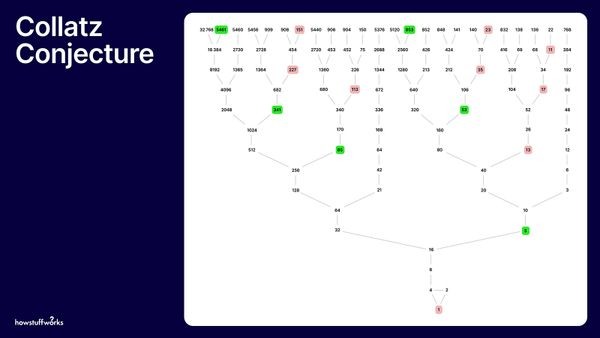In this article, WHAT.EDU.VN explores the concept of the highest number, delving into mathematical concepts and mind-bending magnitudes. While infinity itself remains unquantifiable, we’ll journey through astronomical contenders and mathematical constructs that push the boundaries of our numerical comprehension.
1. Understanding the Concept of “Highest Number”
What does it even mean to ask, “What Is The Highest Number?” The answer is more philosophical than mathematical. There isn’t a single, definitive “highest number” because numbers, in theory, go on forever. The set of natural numbers (1, 2, 3, …) is infinite. You can always add 1 to any number and get a bigger one.
1.1. Infinity: The Unreachable Limit
The concept of infinity (often denoted by the symbol ∞) is crucial here. Infinity isn’t a number in the traditional sense; it’s more of a concept representing something without any limit. You can’t “reach” infinity, and you can’t perform arithmetic operations with it as you would with regular numbers.
1.2. Transfinite Numbers: Beyond the Infinite
Mathematics gets even more mind-bending with the introduction of transfinite numbers. These are infinite numbers, but some are “larger” than others. Georg Cantor developed the theory of transfinite numbers, demonstrating that the infinity of real numbers is a “larger” infinity than the infinity of natural numbers. This is often represented by different “sizes” of infinity, denoted by symbols like ℵ₀ (aleph-null) for the cardinality of natural numbers and 𝔠 (continuum) for the cardinality of real numbers.
Alt: Infinity symbol written in chalk, representing limitless quantities.
2. Large Numbers We Can Actually Name
While we can’t pinpoint the absolute “highest number,” we can explore some incredibly large numbers that have been defined and named. These numbers, though finite, are so vast that they dwarf our everyday understanding of quantity.
2.1. Avogadro’s Number: The Chemist’s Giant
Avogadro’s number, approximately 6.02214076 × 10²³, is a cornerstone of chemistry. It represents the number of atoms, ions, or molecules in one mole of a substance. While not the largest number on our list, it’s a foundational constant that connects the microscopic world of atoms to the macroscopic world we experience. It’s used daily by scientists to relate molar mass to mass on a human-scale.
2.2. Factorials: Rapid Growth
A factorial (denoted by the symbol !) is the product of all positive integers less than or equal to a given number. For example, 5! (5 factorial) is 5 4 3 2 1 = 120. Factorials grow incredibly quickly. 10! is already 3,628,800. 69! is the largest factorial that most calculators can handle.
2.3. The Eddington Number: Estimating the Universe
The Eddington number, estimated to be around 1.57 x 10⁷⁹, is a hypothesis about the total number of protons in the observable universe. While the exact value is uncertain and subject to ongoing scientific research, it provides a sense of the sheer scale of the cosmos. This number highlights our continuing efforts to measure and comprehend the universe’s composition.
2.4. Googol: Inspiring a Tech Giant
A googol is a 1 followed by 100 zeros (10¹⁰⁰). It’s a number so large that it’s difficult to grasp its magnitude. It gained fame when the founders of Google named their search engine after it (though they misspelled it!).
2.5. Googolplex: Beyond Comprehension
A googolplex is even larger than a googol. It’s a 1 followed by a googol zeros (10googol). Writing out a googolplex would be physically impossible, as it would require more space than the observable universe provides.
2.6. Skewes’ Number: A Colossal Prime
Skewes’ number, specifically the first Skewes’ number, is an incredibly large number used in number theory related to prime numbers. It’s an upper bound for the smallest number x for which π(x) > li(x), where π(x) is the prime-counting function and li(x) is the logarithmic integral function. The exact value is approximately e^(e^(e^(79))), which is far larger than a googolplex.
2.7. Graham’s Number: Climbing the Heights of Abstraction
Graham’s number is an extremely large number that arose in connection with a problem in Ramsey theory, a branch of mathematics. It’s so large that it cannot be written down in ordinary notation. It requires a special notation called Knuth’s up-arrow notation to even begin to describe it.
Knuth’s Up-Arrow Notation:
- a ↑ b = a^b (exponentiation)
- a ↑↑ b = a ↑ (a ↑ (a ↑ … a)) (b times) (tetration)
- a ↑↑↑ b = a ↑↑ (a ↑↑ (a ↑↑ … a)) (b times)
- And so on…
Graham’s number involves iterating this process multiple times, creating a number far beyond human comprehension.
2.8. TREE(3): A Combinatorial Explosion
TREE(3) is a number that arises from a problem in graph theory. The TREE(n) function describes the maximum length of a sequence of trees such that no tree is “embeddable” in an earlier tree. TREE(3) is so incredibly large that it dwarfs even Graham’s number. Describing its magnitude requires even more advanced mathematical concepts.
2.9. Rayo’s Number: Defying Definition
Rayo’s number, introduced by Agustín Rayo, is arguably the largest number that has ever been used in a mathematical proof. Its definition is based on a complex formal system, and it’s designed to be so large that it cannot be uniquely described within that system.
The definition of Rayo’s number can be summarized as follows:
“The smallest positive integer bigger than any finite positive integer named by an expression in the language of first-order set theory with less than a googol symbols.”
This definition itself is mind-boggling, highlighting the abstract nature of extremely large numbers.
Alt: A collage of mathematical equations, illustrating the complexities of advanced mathematics.
3. Why Explore Large Numbers?
The exploration of large numbers might seem abstract and disconnected from everyday life. However, it has several important implications and benefits:
- Pushing the Boundaries of Mathematics: Investigating large numbers forces mathematicians to develop new tools and concepts, expanding the horizons of mathematical knowledge.
- Understanding Complexity: Large numbers often arise in the context of complex systems, such as the universe or intricate algorithms. Studying them can provide insights into the behavior of these systems.
- Computational Challenges: Working with extremely large numbers presents significant computational challenges, driving innovation in computer science and algorithm design.
- Pure Curiosity: The sheer scale of these numbers sparks our curiosity and inspires us to contemplate the infinite and the nature of reality.
4. Common Misconceptions About Large Numbers
It’s easy to get confused when dealing with numbers that are far beyond our everyday experience. Here are a few common misconceptions:
- Infinity is a Number: As mentioned earlier, infinity is not a number but a concept representing something without limit.
- All Infinities are Equal: Georg Cantor showed that there are different “sizes” of infinity, with some infinite sets being larger than others.
- Large Numbers are “Practical”: While large numbers can be useful in certain contexts (e.g., cryptography), the numbers discussed in this article are mostly theoretical constructs.
- We Can Imagine Large Numbers: While we can understand the concept of a large number, truly imagining its magnitude is beyond human capability.
5. The Ongoing Search for Larger Numbers
The quest to define and explore larger numbers is an ongoing endeavor in mathematics and computer science. Researchers continue to develop new notations and concepts to represent and manipulate these mind-boggling quantities.
5.1. The Great Internet Mersenne Prime Search (GIMPS)
The Great Internet Mersenne Prime Search (GIMPS) is a distributed computing project dedicated to finding new large prime numbers, specifically Mersenne primes. Mersenne primes are prime numbers of the form 2^p – 1, where p is also a prime number. GIMPS harnesses the collective processing power of volunteers’ computers around the world to perform the complex calculations required to identify these elusive primes.
5.2. Implications of Finding Larger Primes
The discovery of larger prime numbers has several implications:
- Cryptography: Prime numbers are fundamental to modern cryptography, and larger primes contribute to stronger encryption algorithms.
- Number Theory Research: Finding new primes provides valuable data for research in number theory, helping mathematicians understand the distribution and properties of prime numbers.
- Computational Advancement: The GIMPS project pushes the boundaries of distributed computing and algorithm optimization.
6. FAQ About the Highest Number
| Question | Answer |
|---|---|
| Is there a last number? | No, the set of numbers is infinite. You can always add 1 to a number. |
| Is Googol the highest number? | No, a googol is large, but a googolplex is larger, and there are many other numbers larger than that. |
| Can infinity be expressed numerically? | Infinity isn’t a number but a concept indicating something without end. |
| Who invented Googol? | American mathematician Edward Kasner invented the term “googol”, and his nine-year-old nephew Milton Sirotta named it. |
| What does Avogadro’s number signify? | Avogadro’s number represents the count of atoms or molecules in one mole of a substance, approximately 6.02214076 × 10²³. |
| Why are prime numbers significant? | Prime numbers are key to encryption. Larger primes are vital for modern cryptography. |
| Can Graham’s number be written down? | No, Graham’s number is too vast to be written down in standard numerical notation, requiring special mathematical notation like Knuth’s up-arrow notation to begin describing its magnitude. |
| How does Skewes’ number relate to primes? | Skewes’ number is an upper bound related to the prime-counting function, indicating where the count of prime numbers exceeds a particular logarithmic integral function. |
| What makes Rayo’s number unique? | Rayo’s number is defined in such a way that it’s larger than any number that can be defined using less than a googol symbols in the language of first-order set theory. |
| What’s the purpose of searching for big primes? | Large prime numbers enhance cryptographic security and advance number theory studies, contributing valuable data on prime number distribution and characteristics. |



7. The Highest Number and Its Cultural Impact
The highest number, while a technical concept, has permeated culture and our imagination, particularly in science fiction, literature, and educational contexts, stimulating thought and discussion about the limits of understanding and the nature of infinity.
7.1. Large Numbers in Education
Introducing extremely large numbers in education, though challenging, helps students grasp abstract mathematical concepts, appreciate the limitless nature of numbers, and understand the utility of mathematical notation for expressing very large quantities.
7.2. Influence on Science Fiction
Authors have used concepts of immense numbers to represent cosmic scales, advanced technologies, or unknowable entities, enhancing the sense of wonder and intellectual stimulation.
7.3. The Philosophical Angle
The concept of the highest number raises significant philosophical questions regarding the finite versus the infinite, the limits of human understanding, and the abstract nature of mathematical constructs like infinity and beyond.
Alt: Conceptual artwork of the universe, symbolizing the vastness and unknown quantities of space.
8. The Practical Side of Large Numbers
While the highest number itself might seem like an abstract concept, the study and application of large numbers have practical implications, especially in computing, cryptography, and data science.
8.1. Role in Computing
In computer science, large numbers are crucial for various operations, including data encryption, hashing algorithms, and simulations. Efficiently handling these numbers is essential for processing large datasets and performing complex calculations.
8.2. Significance in Cryptography
Large prime numbers, in particular, are foundational to modern cryptographic systems like RSA. The security of these systems relies on the difficulty of factoring large numbers into their prime components.
8.3. Applications in Data Science
Large numbers and complex calculations are common in data science, where they’re used for statistical analysis, machine learning models, and simulations. Handling these computations effectively is crucial for drawing meaningful insights from vast amounts of data.
9. Conclusion: The Endless Pursuit of the “Highest Number”
The question “What is the highest number?” doesn’t have a simple answer. While infinity itself is a concept beyond quantification, mathematicians and computer scientists continue to explore the realm of extremely large numbers, pushing the boundaries of our understanding and developing new tools to represent and manipulate these mind-boggling quantities.
Exploring these numbers is more than just an academic exercise. It challenges our perceptions, drives innovation, and reminds us of the vastness and complexity of the universe and the mathematical structures that underpin it. The highest number may be unreachable, but the journey to explore it is a testament to human curiosity and the endless pursuit of knowledge.
Do you have questions that keep you up at night? Are you seeking answers to complex problems or simple curiosities? At WHAT.EDU.VN, we’re dedicated to providing you with fast, accurate, and free answers to all your questions. Our team of experts and knowledgeable community members are ready to assist you, no matter the topic.
Don’t let your questions go unanswered. Visit WHAT.EDU.VN today and experience the convenience and value of our free question-answering service. We’re here to help you explore the world, expand your knowledge, and satisfy your curiosity. Contact us at 888 Question City Plaza, Seattle, WA 98101, United States, or reach out via WhatsApp at +1 (206) 555-7890. Your quest for knowledge starts here at what.edu.vn. Let us help you find the answers you seek.
